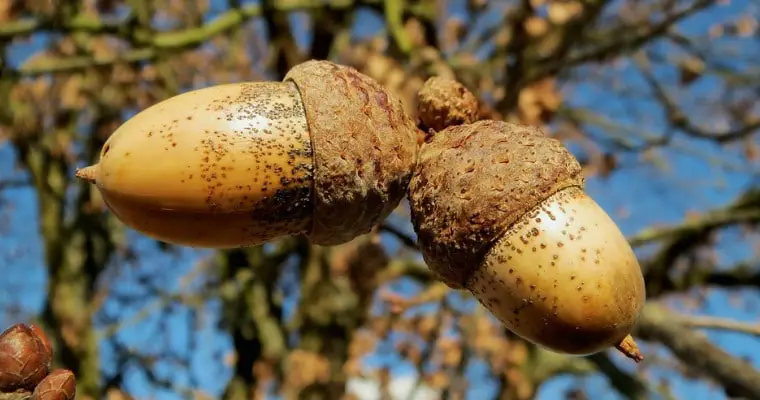Oak trees do not produce acorns until they are fifty years of age or older

Oak Trees and Acorn Production: The Age Factor

Oak trees, renowned for their grandeur and longevity, have a fascinating life cycle with a notable characteristic: they do not produce acorns until they are fifty years of age or older1^. This intriguing fact has both practical and ecological implications, shedding light on the way these majestic trees reproduce and contribute to their environment.
Understanding the Delayed Acorn Production
Acorns, the small fruits of oak trees, serve a vital purpose in their reproductive cycle. Each acorn contains a seed that has the potential to grow into a new oak tree. However, oak trees exhibit a significant delay in producing these iconic nuts. While some tree species might start producing seeds within a few years of their germination, oak trees require several decades to reach maturity and produce acorns.
The reason behind this delay lies in the oak tree’s natural growth pattern and life cycle. Oak trees experience a relatively slow growth rate during their initial years, focusing on developing their roots and trunk to establish a strong foundation1^. This stage is crucial for the tree’s long-term survival, as it ensures stability and resilience against environmental challenges.
Patience Rewarded: The Advantages of Delayed Acorn Production

While the delayed acorn production of oak trees may seem like a disadvantage, it actually offers several significant benefits. Firstly, by investing a considerable amount of time in their own growth and development, oak trees increase their chances of survival. This approach allows them to establish a robust and extensive root system, better equipped to access water and nutrients from the soil, especially in challenging environments1^.
Moreover, delayed acorn production helps oak trees avoid the potential risks associated with premature or excessive seed production. By waiting until they have reached an age of fifty years or older, oak trees ensure that they possess sufficient resources to produce a bountiful crop of acorns1^. This abundance of seed production maximizes the chances of successful germination and, consequently, the survival and dispersal of their offspring.
Ecological Significance
The delayed acorn production of oak trees also plays a crucial role in the overall health and biodiversity of forest ecosystems. As long-lived and dominant species, mature oak trees provide a stable habitat for a wide range of flora and fauna1^. Animals such as squirrels, turkeys, and deer heavily rely on the nutritious acorns as a food source during the autumn months, enabling them to gather strength and reserves for the winter ahead.
Furthermore, the delayed acorn production helps sustain the unique balance of forest communities over time. Oak trees, with their late reproductive phase, create gaps in acorn availability among different years1^. This variation in mast years, or years of abundant acorn production, influences the foraging behaviors and population dynamics of animals, while also preventing a single species from becoming dominant. Consequently, this cycle contributes to the overall resilience and diversity of forest ecosystems.
In conclusion, oak trees fascinatingly withhold acorn production until they reach an age of fifty years or older. This delay serves specific purposes, ensuring the trees’ survival, promoting successful germination, and contributing to the ecological balance of forest communities. While it may require patience, watching an oak tree reach maturity and begin producing its iconic acorns is a gratifying testament to nature’s intricate processes.
Source: Garden Guides
Related Posts
Quick Links
Legal Stuff

